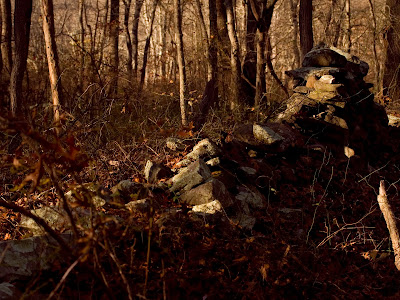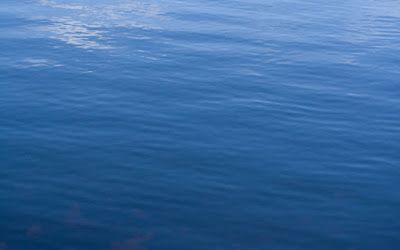I'm a big Canon fan. I've been using my 20D for many years now, have a few Canon lenses, and have been thinking about upgrading to the full-frame EOS 5D. I have not ruled out the possibility of going whole-hog and buying the EOS 1Ds, but considering that it is over twice as much as the 5D, I'd have to think about it for some time.
My favorite glass, though, has got to be with Sony. Sony has the only autofocus Carl Zeiss lenses on the market, which is a big plus. Zeiss isn't the clearest glass on the market, but when it comes to macro photography I can think of none better. The bokeh in Zeiss lenses is just dream-worthy. Obviously, there's Leica, which gives boners to the best photographers worldwide.
I actually think Leica is overrated. I've never had dealings with Leica equipment that I couldn't have achieved with Canon, Nikon, or Zeiss hardware for, at times, one-third the cost. Leica is just so god-awful expensive. For the price, I expect to be able to take Pulitzer-worthy photos and then have sex with the lens.
Leica has produced some serious magic, though, with their recent release of a medium-format digital in an SLR body. Before digital, there were a wide variety of medium-format cameras that didn't require large, modular constructs. Mamiya made one, as did Hasselblad, Fuji, Leica, and almost every other major imaging company on Earth.
But after the emergence of digital, medium format completely disappeared except for a few companies catering to the ultra-high-end of the market. Hasselblad, Leaf, Phase One, and Mamiya are pretty much it. And with prices exceeding forty-grand for a single lens-body-back combo, and lenses which run $5,000 or more, these are out of the price range of everyone. In fact, these companies don't actually sell anything. They are run by succubi that live off of the crushed hopes and dreams of photographers everywhere.
The other problem is that digital is much more flexible than film. Photos that can easily be printed up to 11"x17" with whatever Photoshopping is required to get it up to snuff. When the gap between a $30,000 Mamiya and a $7,000 Canon is as small as it is today, the old Med-For companies have a terribly hard time explaining their existence.
But as digital moves forward, funny enough, the companies that have put medium format into question are putting their own high-end gear into question. For example, I'm in love with the Canon 5D, which costs less than half as much as the 1Ds, and produces photos that are nearly identical. Digital is leveling the playing field in almost every way.
Previously, to get the best shots, you needed to process your own film. You needed to use special film like Kodachrome, Fujichrome, of Cibachrome. You needed to buy TONS of film so you always had supplies to take more shots. You had to buy from special catalogs and stores and owned equipment made by companies no one but you could pronounce. You needed expensive equipment to process your shots with burn and dodge. No longer.
Digital allows anyone to be a post-processor. All they have to do is learn a few tricks in Photoshop and they're off and running. No one needs to mess with film, which removes one of the major barriers in enjoying easy photography. The removal of film removes the need for all of the ancillary equipment required for that film. You don't need exotic films to achieve the colors you want. The internet allows you to shop from every brand and country on Earth. Flickr, Picasa, and Facebook have turned our entire lives into an unending stream of photos. We are all photographers capturing every moment of life. The job of the photographer has been strongly marginalized by photographic clearing houses like Dreamstime, where everyone is a potential pro. Digital has democratized what was once an exclusive domain.
Obviously, this pisses off a lot of pro-togs out there. How can they be special if everyone is like them. I think this is the main reason so many photo art students stick with film. Not because of quality, but because it's the only way that they can feel special and artsy-fartsy.
To demonstrate this, I've tracked down full-size images from the Canon EOS 1Ds, EOS 7D, and the Mamiya ZD. I would have used the DM, but sample images from it have yet to come out. Besides, this is probably a good approximation of the new DM22 22MP camera that will be selling for $10,000 later this year.
Moreover, the ZD is only three years old and cost $12,000. I could buy a whole bevy of Canon lenses for the same price and expect an investment of that size to remain cutting edge for more than a couple of years. Considering the speed of development with Canon and Nikon, the value proposition of medium format as a long-term investment is severely limited.

To quote Mamiya's website, "Other digital camera backs or 35mm-sized DSLRs simply cannot compare!" Well, Mamiya, I disagree.

Just look at this photo comparison. Ignoring different framing, it's obvious that both the 1Ds and the ZD outperform the 7D, but is it worth upwards of six times the 7D's price? And it's also obvious that the ZD slightly outperforms the Canon, but is that worth twice the price?
In my opinion, recent developments in lower-end cameras that cater to the pro-sumer market are starting to cannibalize the high end. Medium format is especially useful for studio photography, but it's there that the differences between formats is least visible in the digital world. It actually begs the question of why medium format is desireable at all, from a technical standpoint.
Obviously, from a business standpoint, the allure of medium format is undeniable. If you're a pro trying to sell your services, you want to look like a pro and that you do
not fuck around. People will likely take you less seriously or consider you lower on their list in comparison to another pro who has equipment with names which they cannot pronounce. So from that perspective, medium format is a must.
But what about the markets where medium format isn't a consideration? The markets where the pro doesn't care about others' perceptions of her? It's here where the value of the high-end full-format is shrinking. Why bother with the 1Ds when the 5D, or even the 7D will do?
Perhaps it's for this reason that Canon has, I think, been purposely ignoring the APS-C, pro-sumer end of the market. Canon might have you with their lenses, but that's a once-in-a-decade purchase. The only place where Canon repeatedly gets money out of you is the camera body, so it's in their best interest to force you into expensive bodies.
The glass available for 1.6x cameras from Canon has been woefully lacking for the past few years. Canon calls it the EF-S line of lenses, the S signifying that this is the APS-C-sized sensor. But whether the sensor and camera are up-to-snuff has been meaningless since the good lenses are only available for Canon's full-frame cameras.
Yes, you could simply put the EF lenses onto an APS-C camera, but the 1.6X crop factor pushes the limits of usability on many of the lenses. Canon has been ignoring the pro-sumer market for self-serving reasons. The market both deserves and wants better glass.
It's because of this that I'm excited about the 7D. It shows that Canon is getting more interested in the lower-end, pro-sumer market and, perhaps, this new high-performance APS-C camera is the bellwether to a new wave of APS-C lenses that don't stink. I don't know why this is the case, but the economic downturn likely has something to do with it. It doesn't matter. Just so long as Canon finally starts delivering to a market that simply doesn't want or need the cost and weight associated with full-frame gear.




























 To quote Mamiya's website, "Other digital camera backs or 35mm-sized DSLRs simply cannot compare!" Well, Mamiya, I disagree.
To quote Mamiya's website, "Other digital camera backs or 35mm-sized DSLRs simply cannot compare!" Well, Mamiya, I disagree. Just look at this photo comparison. Ignoring different framing, it's obvious that both the 1Ds and the ZD outperform the 7D, but is it worth upwards of six times the 7D's price? And it's also obvious that the ZD slightly outperforms the Canon, but is that worth twice the price?
Just look at this photo comparison. Ignoring different framing, it's obvious that both the 1Ds and the ZD outperform the 7D, but is it worth upwards of six times the 7D's price? And it's also obvious that the ZD slightly outperforms the Canon, but is that worth twice the price?





 Here is my work at removing his watermark. You can still see traces of it, but that would be easy to remove with more time. My current work took, and I timed myself, slightly less than eleven minutes. It takes me longer to poop.
Here is my work at removing his watermark. You can still see traces of it, but that would be easy to remove with more time. My current work took, and I timed myself, slightly less than eleven minutes. It takes me longer to poop.
 How the FUCK are you supposed to determine anything from that? Give me the whole damned image or don't freaking bother! At the resolutions they're using, it would be impossible to tell the difference between the D3 and a camera that costs one-third as much.
How the FUCK are you supposed to determine anything from that? Give me the whole damned image or don't freaking bother! At the resolutions they're using, it would be impossible to tell the difference between the D3 and a camera that costs one-third as much.
